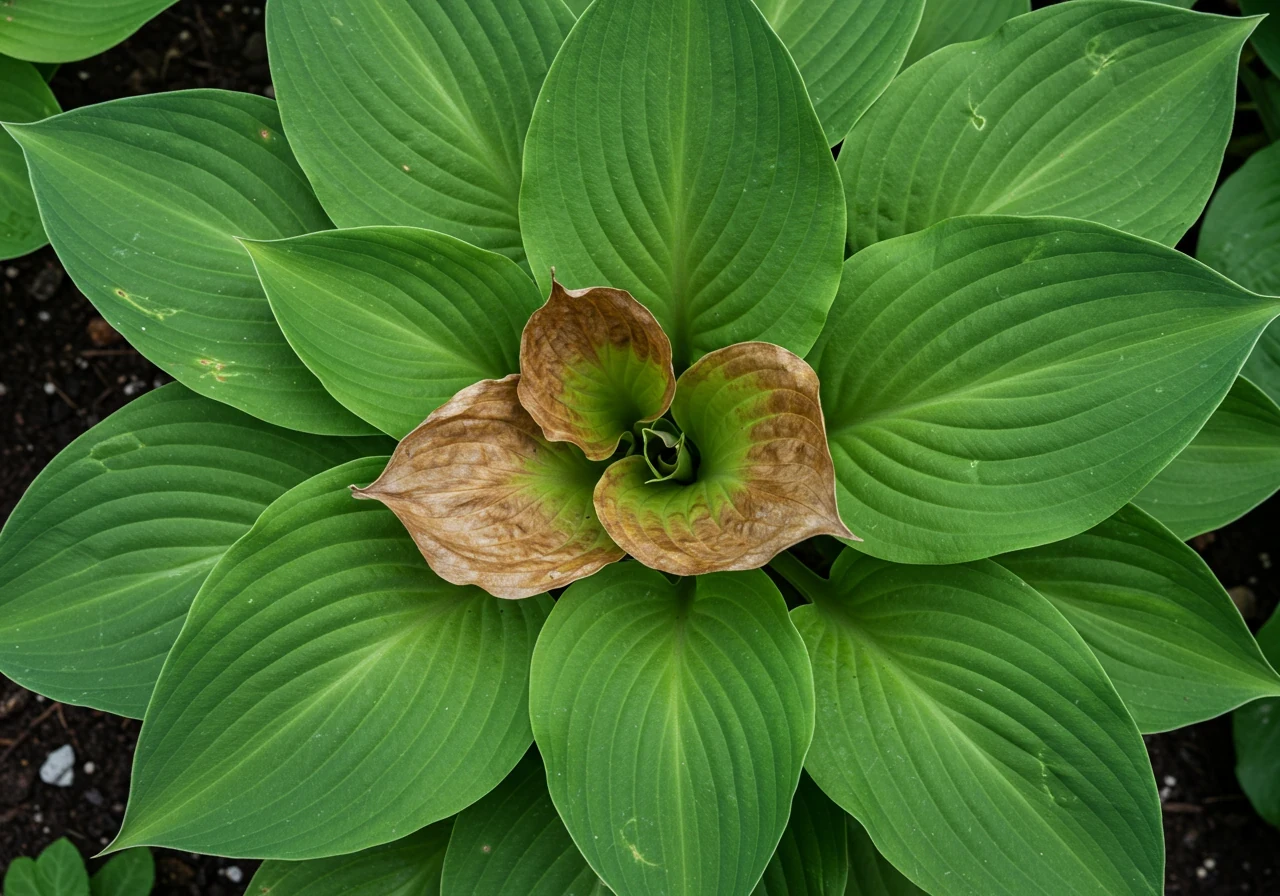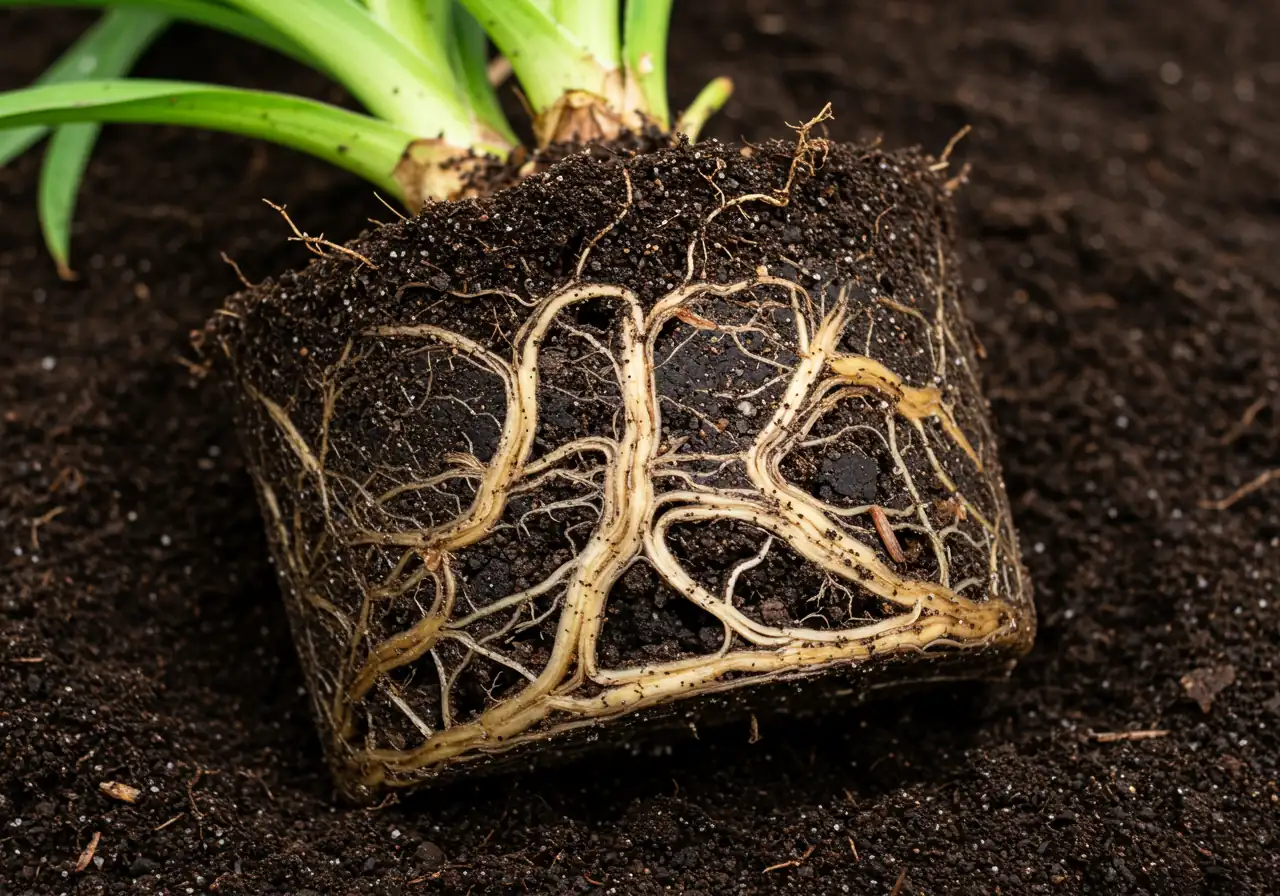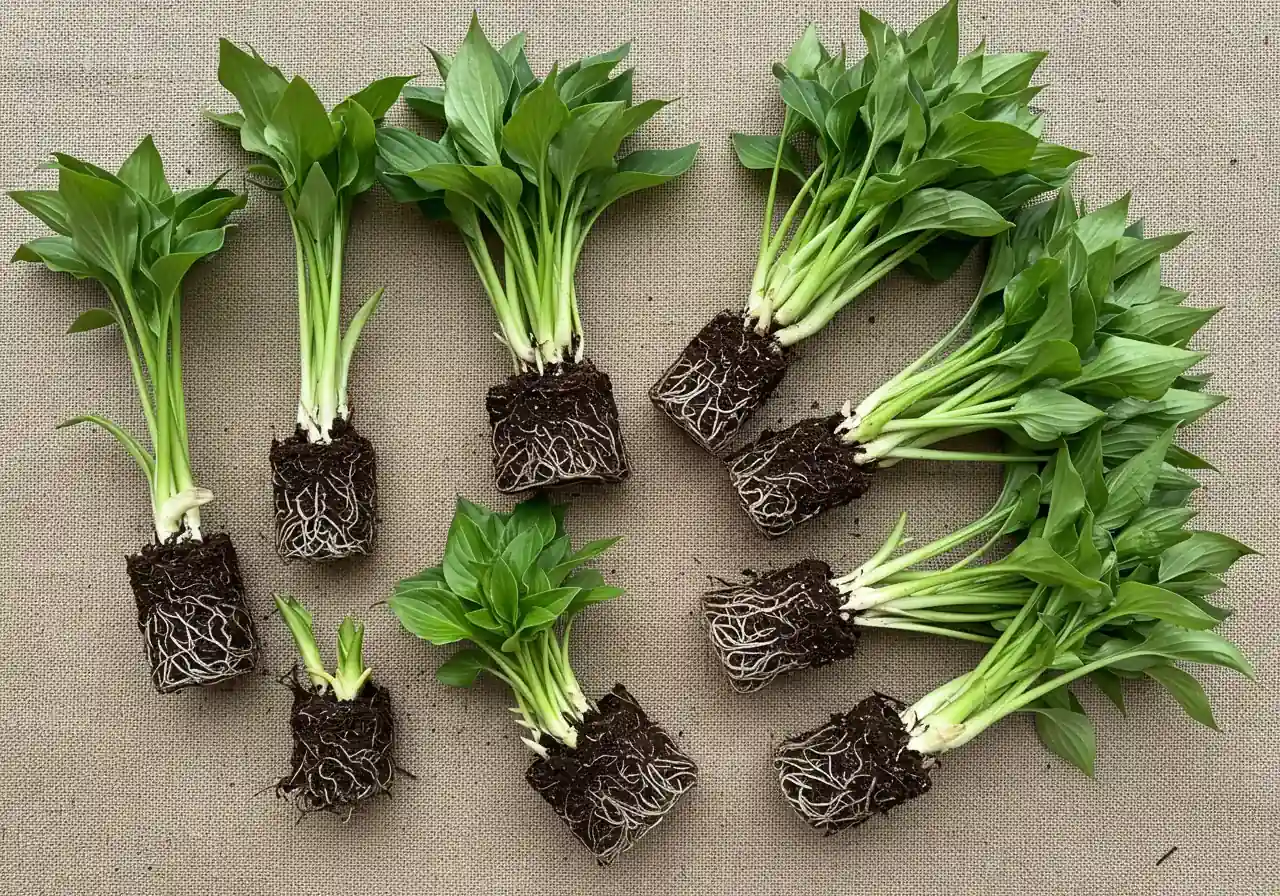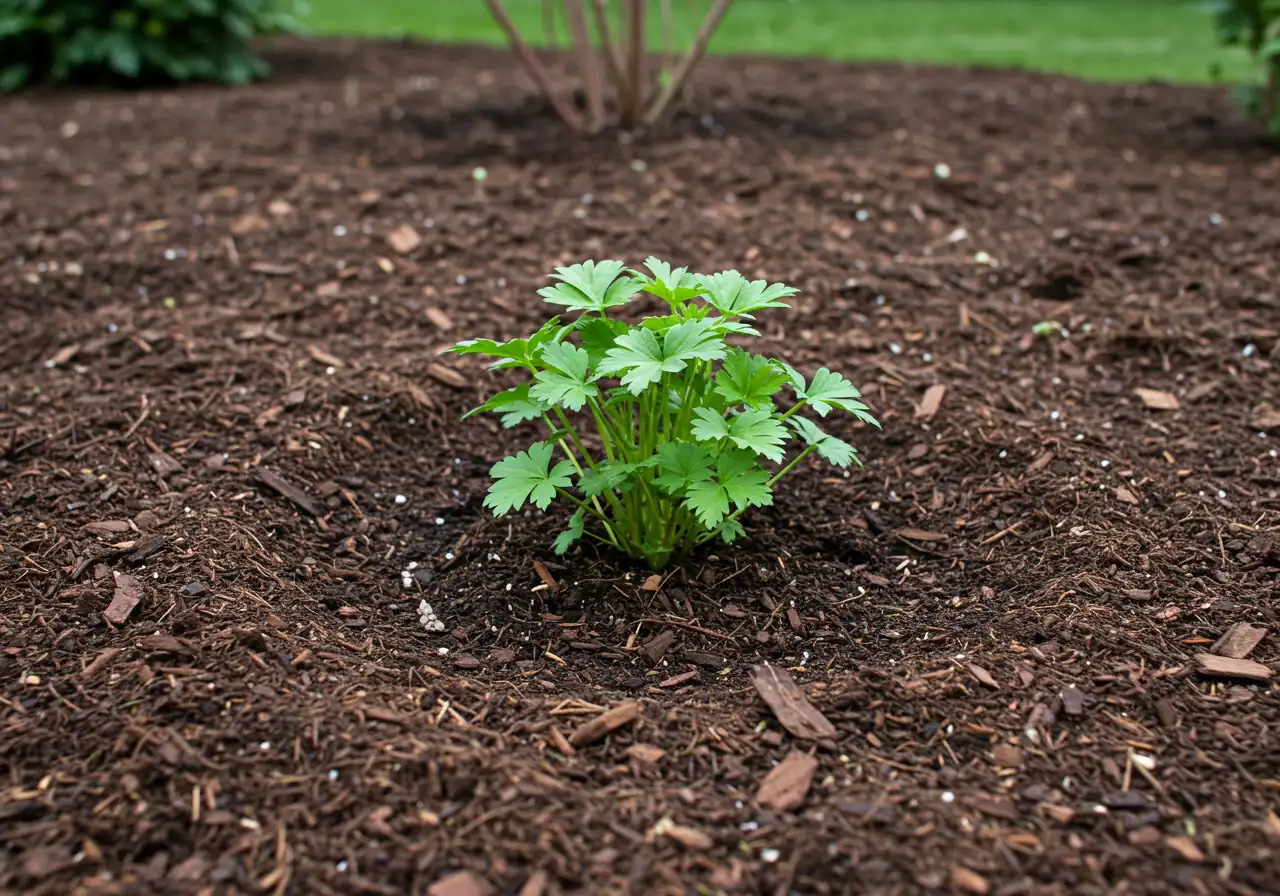Stop Russell Garden Chaos: Fall Perennial Division Guide
Quick Overview
- Fall perennial division (late Aug - early Oct in Ottawa) revitalizes overgrown plants.
- Signs needing division: dead centers, reduced flowering, flopping, overcrowding.
- Benefits: Healthier plants, more blooms, controls size, FREE new plants!
- Key steps: Dig carefully, separate gently, replant at correct depth, water well, mulch later.
- Fall care: Consistent watering until freeze-up, mulch after hard frost.
Introduction: Is Your Russell Garden Staging a Perennial Rebellion?
Is your Russell garden looking less like a peaceful retreat and more like a botanical brawl? Are your hostas staging a hostile takeover of the walkway, or maybe your daylilies have decided personal space is completely overrated? If your flower beds feel a bit too enthusiastic, like they're plotting a perennial rebellion, don't despair! The secret weapon in your landscaping toolkit is fall perennial division. It might sound technical, but it's simply the process of splitting up those overgrown plant clumps.
Why do it? You'll enjoy healthier, happier plants, gain free new plants to fill gaps or share with neighbours, and achieve a tidier, more attractive garden overall next spring. Timing is key, and fall is perfect for this task in the Ottawa region. The cooler temperatures and autumn moisture give roots ample time to establish before winter arrives. We love helping homeowners across Ottawa and surrounding areas like Manotick bring order back to their gardens and prepare for beautiful blooms ahead. Need help getting started? Request a quote today! Let's get dividing!
Beyond the Tidy-Up: Why Your Perennials Are Begging to Be Divided

Sure, dividing perennials makes your garden look neater, like giving your flower beds a much-needed haircut. But trust us, there's way more going on beneath the surface than just aesthetics! Think of your established perennials like they're living in a crowded apartment complex. At first, it was cozy, but now everyone's elbowing each other for space, sunlight, and snacks (a.k.a., water and nutrients). This friendly competition eventually turns stressful for your plants.
Here’s the real dirt on why division is crucial:
- Boosting Plant Health and Vigour: Over time, the center of many perennial clumps can die out, leaving a less attractive "doughnut" shape. Worse, overcrowding means intense root competition. Plants struggle to get enough water and nutrients, leading to weaker growth, yellowing leaves, and overall poor health. Dividing gives each section fresh soil access and room to breathe, rejuvenating the entire plant. This is especially important in areas like Greely and Nepean where heavy clay soil can make it tough for crowded roots to penetrate and thrive. Digging them up can be hard work, especially challenging in our region's heavy clay soil without the right ergonomic gardening tools for clay soil.
- More Blooms, Please!: Are your once-prolific bloomers putting on a less impressive show? Overcrowding is often the culprit. Stressed, nutrient-starved plants simply don't have the energy to produce abundant or large flowers. Dividing encourages vigorous new growth, leading to a much better floral display next season. Imagine enjoying those vibrant blooms next summer while relaxing nearby, maybe even getting your outdoor kitchen summer-ready for entertaining amidst a stunning garden!
- Preventing Pests and Diseases: Dense, overcrowded foliage reduces air circulation. This creates a damp, stagnant environment where fungal diseases (like powdery mildew, common in the humid Ottawa summer) and pests feel right at home. Thinning things out by dividing improves airflow, helping leaves stay drier and healthier.
- Free Plants! (Yes, Really!): This is the best part! Every time you divide a perennial, you essentially get free plants. You can use these new divisions to fill in bare spots in your garden beds, create new plantings, or share the garden love with friends and neighbours. It's the ultimate BOGO deal from Mother Nature.
- Prepping for Ottawa Winters: Dividing in the fall gives the new transplants time to establish roots before the ground freezes solid. This vital step helps them survive our chilly Ottawa winters and bounce back strong in the spring. This is a key part of your Russell fall garden check to prevent winter kill, ensuring healthier plants come springtime.
So, while a tidy garden is nice, dividing perennials is truly about ensuring the long-term health, beauty, and productivity of your plantings – keeping your entire yard looking its best, much like achieving perfect Russell lawn care. If tackling those overgrown clumps feels overwhelming, remember professional landscaping services are available to help keep your garden thriving. Check out our Google Reviews to see what clients say!
The Gardener's Calendar: Nailing Fall Division Timing in Ottawa
Alright garden enthusiasts, let's talk timing! Knowing when to divide perennials in Ottawa (we're generally Zone 5a/b) is like trying to predict plaid shirt season – it feels intuitive, but getting it just right makes all the difference. Miss the window, and your plants might give you the cold shoulder come spring.
The Sweet Spot: Late August to Early October
Think of this period as the "golden hour" for perennial division in our region. Why?
- Cooler Air, Warm Soil: The scorching summer heat has usually backed off, meaning less stress for newly divided plants. Crucially, the soil is still warm enough to encourage active root growth.
- Root Race Against Winter: This timeframe typically gives transplants about 4-6 weeks to get their roots settled before the ground freezes solid. It's a crucial head start for surviving our notorious winters.
- Nature's Watering Can: Fall often brings more reliable rainfall than mid-summer, helping keep those new divisions hydrated (though you'll still need to monitor!).
Conceptual: Root Establishment Window vs. Frost
*Illustrative chart showing decreasing ideal time for root establishment as fall progresses towards frost.*
Ottawa's Quirks: Frost and a Short Season
We know Ottawa weather can turn on a dime! Our relatively short growing season means this fall window isn't huge. An early frost can sneak up, especially in areas slightly further out like Osgoode or Winchester, potentially damaging plants divided too late. Waiting until mid-October is risky business; the roots just won't have enough time to establish properly, making them vulnerable to frost heave and winter kill.
Practical Timing Tips:
- Watch the Forecast: Avoid dividing during an unexpected late-summer heatwave. Aim for a cooler, overcast day if possible. Check local forecasts like those from Environment Canada.
- Soil Check: Ensure the soil is workable – not soggy mud and not concrete-dry. Moist soil is easiest to dig and best for roots.
- Fall vs. Spring Candidates: Most summer and fall bloomers (think Hostas, Daylilies, Sedum, Asters) love fall division. However, early spring bloomers like Peonies or Bearded Iris often prefer being divided right after they flower in late spring/early summer or very early fall at the latest. If unsure, a quick search for your specific plant is wise! The Ottawa Master Gardeners website can be a helpful resource.
- Don't Delay: Once mid-September hits, try to get your dividing done sooner rather than later.
Trying to juggle division with leaf raking and other autumn tasks? Getting everything done before the snow flies can feel like a marathon. If your garden to-do list is overwhelming, consider getting help with tasks like a thorough Ottawa garden clean up service or specific assistance in areas like a Metcalf garden clean up service. It's all part of the comprehensive landscaping services that can make fall prep smoother. Even dedicated services like the Russell garden clean up service focus on getting your beds ready for winter.
Getting the timing right sets your garden up for success next year. If you have specific questions about timing for your plants or need a hand, feel free to contact us!
Who Gets the Chop? Your Fall Perennial Division Hit List (and Who to Spare)

Alright, garden commanders, it's decision time! Fall is here, and some of your trusty perennial troops might be getting a little too comfortable, crowding out their neighbors and generally staging a slow-motion takeover of your flower beds. Don't worry, dividing them isn't mean – it's like giving them a new lease on life! But who makes the cut for a fall division session, and who gets a pass until spring? Let's make our list.
Signs Your Perennials Are Pleading for Division:
Before you grab the shovel, look for these tell-tale signs. If you see one or more, that plant is likely a prime candidate:
- The Dreaded Doughnut: The center of the clump looks dead, brown, or just sparse, with all the healthy growth forming a ring around the outside.
- Shrinking Flower Power: The plant still grows, but produces fewer flowers, or the blooms are noticeably smaller than in past years. It's running out of steam!
- Major Floppage: Stems that used to stand tall are now flopping over, even when they aren't loaded with blooms. This often means the roots are too crowded and can't support the top growth well.
- Elbow Room Issues: The clump has simply gotten too big for its designated space, bullying its neighbours. You might see this with enthusiastic growers in gardens across Ottawa, from Barrhaven to Manotick.
- Good Fall Candidates
- Wait or Divide Earlier
The Fall Division Hit List:
These common garden favourites generally respond well to being divided in the fall here in the Ottawa area (Late Aug - Early Oct window):
| Perennial Superstar | Ideal Division Season | Signs It Needs Dividing | Ottawa Notes & Tips |
|---|---|---|---|
| Hostas | Fall or Spring | Doughnut center, smaller leaves | Super easy! Often can be pulled apart by hand or cut with a spade. Handles our clay soil well. |
| Daylilies (Hemerocallis) | Fall or Spring | Reduced flowering, dense clumps | Very forgiving. Dig up the whole clump; tough roots might need a sharp spade or knife. |
| Siberian Iris | Late Summer / Fall | Center dies out, fewer blooms | Divide every 3-4 years. Keep the rhizomes just below the soil surface. |
| Sedum (Autumn Joy) | Fall or Spring | Floppy stems, center opens up | Easy to divide. Can even root stem cuttings! Tolerates drier conditions often found later in the season. |
| Bee Balm (Monarda) | Fall or Spring | Spreads rapidly, center thinning | Prone to powdery mildew if too crowded; division improves air circulation. Spreads via runners, so easy to dig sections. |
| Garden Phlox (Phlox paniculata) | Fall or Spring | Center dies out, powdery mildew | Similar to Bee Balm, division helps prevent disease. Ensure good air flow. |
| Astilbe | Fall or Spring | Reduced flowering, weak growth | Prefers moist conditions; ensure divisions are watered well, especially if fall is dry. Appreciates amending clay soil with compost. |
Seeing the beautiful results of division in well-maintained gardens is inspiring! Check out our gallery of thriving Ottawa gardens to see what's possible.
Who to Spare This Fall (Generally):
While the list above is eager for autumn attention, some plants are best left alone until spring, or divided much earlier in the season. Disturbing them in the fall can make them vulnerable to our Ottawa winters:
- Peonies: These beauties form their flower buds for next year in the fall. Divide them only if absolutely necessary, and do it very late summer/earliest fall (late Aug/early Sept ideally).
- Tap-Rooted Perennials: Plants like Butterfly Weed (Asclepias), Lupines, and False Indigo (Baptisia) have one long main root. They hate being disturbed and rarely survive division. Admire them in place – you often see gorgeous stands thriving undisturbed in areas like Richmond or Embrun.
- Lavender & Woody Perennials: Plants like Lavender or Russian Sage develop woody stems. They don't divide well from the crown like herbaceous perennials. Propagate these from cuttings instead.
- Heuchera (Coral Bells): While some varieties are tough, many newer Heuchera can be susceptible to frost heaving if their roots aren't well-established before winter. Dividing in spring is often safer.
- Early Spring Bloomers: Creeping Phlox, Basket-of-Gold (Aurinia), etc. – it's generally best to divide these right after they finish blooming in late spring so they have the whole season to recover.
Feeling a bit overwhelmed by the potential digging? Sometimes a full garden tidy-up is the best approach. Our comprehensive Ottawa property cleanup service can tackle division along with leaf removal and bed prep. Residents in specific areas can also benefit from targeted help, like our Metcalf garden clean up service. If you're wondering what others think about our work, check out our customer estimate feedback page – perhaps you'll be leaving your own thank you note after experiencing a revitalized garden next spring!
The Great Divide: A Stress-Free, Step-by-Step Guide

Okay, deep breaths! Dividing perennials might sound like plant surgery, but it’s more like sharing a delicious pie – everyone gets a satisfying piece! Whether you're tending a garden patch in Metcalfe or nurturing flower beds elsewhere in Ottawa, this process is totally doable. Let's break it down, step-by-step, so you can divide like a pro (even if you feel like a total newbie).
Your Division Toolkit:
Gather these essentials before you start digging. Trust us, having everything handy makes life way easier.
- Sharp Spade or Garden Fork: Your main digging tool.
- Old Knife or Hori Hori: For cutting through tougher roots. A bread knife works surprisingly well!
- Hand Trowel: For smaller adjustments and planting.
- Pruners or Garden Shears: To trim back foliage.
- Tarp or Wheelbarrow: To contain the plant clump and soil mess.
- Watering Can or Hose: Essential for watering before and after.
- Bucket of Water: To keep roots moist if needed, and to rinse tools.
- Gloves: Protect those hands!
- Compost or Soil Amendments: For giving new divisions a great start.
Let's Get Dividing! (Timeline View)
Step 1: Prep Like a Pro
Water the plant well 1-2 days before. Clear debris from the base. Trim tall foliage back by about half if needed. This makes digging easier and reduces transplant stress. If doing extensive work, a general property clean up first helps.
Step 2: The Big Dig
Dig around the outer edge of the clump, several inches from the stems. Aim to get *under* the root ball. Lever the entire clump out carefully. Place on your tarp.
Step 3: Divide and Conquer
Clean off soil to see roots/crowns. Gently tease apart fibrous roots (like Hostas). Use a sharp knife or back-to-back forks for tough clumps. Ensure each piece has roots and growing points ('eyes'). Discard the old, dead center.
Step 4: Replant with Care
Dig wide holes. Improve soil with compost (vital for good soil preparation!). Plant divisions at the same depth they grew before. Backfill gently, firming soil around roots.
Step 5: Water, Water, Water
Water new divisions thoroughly to settle soil and hydrate roots. Keep consistently moist (not soggy) for several weeks as they establish before the ground freezes.
Step 6: Finishing Touches
Apply a 2-3 inch layer of mulch *after the first hard frost* but before the ground freezes solid. This insulates the soil. Consider mulching and edging for a neat finish. This division is part of routine garden maintenance.
You did it! Stand back, admire your handiwork, and maybe even plan who gets the extra plants. Come next spring, you’ll be sending us a mental thank you when you see those rejuvenated perennials bursting with life. Happy dividing!
TLC for Transplants: Post-Division Care for Ottawa Winters
Okay, you’ve bravely divided your perennials – give yourself a pat on the back! But don't put the gardening gloves away just yet. Those newly transplanted divisions need a little extra Tender Loving Care to settle in before Ottawa throws its full wintery blast at them. Think of it as tucking them in safely for their long winter nap. This post-division care is crucial for their survival and spring comeback.

Water Wisdom:
Remember how we watered before dividing? Keep that hose handy! Your new transplants need consistent moisture to establish their roots before the ground freezes solid. Check the soil every few days – stick your finger in about an inch deep. If it feels dry, give them a good, deep drink. Avoid waterlogging, but don't let them dry out completely. Continue this until a hard freeze stops you. Consistent watering is a cornerstone of good garden maintenance for new plantings.
The Magic of Mulch:
Once the ground has had a good hard frost (usually late October or November in Ottawa), but before it freezes solid, it's time to mulch! Applying a 2-3 inch layer of organic mulch – like shredded leaves, straw, or wood chips – is like giving your plants a cozy winter blanket. It doesn't keep the ground warm, but it insulates it, preventing the damaging freeze-thaw cycles that can heave tender new roots right out of the soil. Need ideas on what to use? Check out our guide on choosing the right landscape materials.
Frost Heave Patrol:
Speaking of heaving, keep an eye on your transplants during those inevitable winter thaws followed by deep freezes. This is especially important in more exposed or slightly colder areas like Vernon or Kenmore. If you see plants looking like they've been pushed upwards, with roots exposed, gently press them back into the soil on a thawed day. Cover any exposed roots with a bit more mulch.
Spring Expectations:
Don't panic if your divisions look a little sluggish when spring first arrives. They put a lot of energy into root growth last fall! Give them some time, consistent moisture as the ground thaws, and they should catch up and reward you with healthy growth. Seeing these plants flourish is one of the most satisfying garden transformations you can witness!
Fall cleanup and transplant care can feel like a lot to juggle before the snow flies. Whether you need help with the whole fall shebang, like the comprehensive support offered by our Metcalf yard cleanup service, or just need a hand with dividing and mulching specific beds, we're here to help. Feel free to book an estimate and let us take some of the fall workload off your plate.
Quick Tips for Perennial Division Success in Ottawa
Dividing perennials doesn't have to be scary! Keep these Ottawa-specific pointers in mind for happy plants (and a happy gardener):
- Time it Right-ish: Aim for late August to early October. Don't wait until the last minute – those surprise early frosts, especially in areas like Barrhaven or out towards Metcalfe, can stop root growth fast!
- Sharp Tools Rule: Use a clean, sharp spade or garden fork. Dull tools tear roots, stressing plants and making your job harder – especially in our sometimes-stubborn soil.
- Water Before You Wrestle: Always water the plants thoroughly a day or two before you plan to dig them up. Moist soil makes digging much easier and is gentler on the roots.
- Give Roots a Welcome Gift: When replanting divisions, mix compost into the planting hole. This improves drainage (helpful in clay!) and gives roots the nutrients they need for a strong start. Choosing the right additions involves careful landscape material selection guidance.
- Tag, You're It!: If you're dividing multiple types of plants, label the divisions immediately. Trust us, playing "guess the perennial" next spring isn't as fun as it sounds!
- Plan for the Mess: Division creates debris! If you end up with more spent foliage and leftover bits than your green bin can handle, remember a fall Ottawa yard cleanup service can whisk it all away. Specialized help is also available, like the Marionville yard cleanup service or a focused Metcalf property cleanup service, leaving your garden neat and tidy for winter.
FAQs: Tackling Your Toughest Fall Division Questions in Russell & Beyond
Got a few lingering questions about splitting up those perennials? You're not alone! Fall division is straightforward, but sometimes little hiccups happen. Here are answers to some common head-scratchers we hear from gardeners around Ottawa.
Don't panic! Hostas are incredibly tough customers. As long as each division still has some healthy roots and a few visible growth points (the 'eyes'), it usually bounces back just fine. Plant them carefully at the right depth, water them well, and add mulch after the first hard frost. Ottawa's typical fall moisture helps recovery. Consistent surrounding lawn care also contributes to a healthier overall environment, reducing stress on recovering plants. Give them time next spring – they might surprise you!
Honestly, it’s getting risky. While daylilies are forgiving, digging in hard ground is tough on you and the plant. More importantly, roots need about 4-6 weeks to establish before a deep freeze hits. If the soil is just slightly firm, watering deeply a day beforehand might help. But if it’s rock solid, waiting until spring is likely safer to avoid winter damage from Ottawa's freeze-thaw cycles. Pushing it too late jeopardizes survival.
While not absolutely mandatory, adding compost makes a huge difference, especially in our common clay soil. It improves drainage, adds nutrients, and gives roots a much better start establishing before winter. If getting bulk compost is tricky, mixing in some good quality bagged garden soil or even just loosening the existing soil thoroughly is better than nothing. Even top-dressing with shredded leaves later adds organic matter. Think of it as setting up your garden installation for long-term success. For those considering new garden beds alongside division, options like sod installation might also be relevant for surrounding areas.
Hands down, it's dividing too late in the season. Life gets busy, fall chores pile up, and suddenly it's late October. Plants divided then simply don't have enough time for their roots to anchor before the ground freezes solid. This makes them prime targets for frost heave and winter kill. The runner-up mistake? Not watering consistently after replanting. Those new roots are thirsty! Current clients can often manage their service schedules via our customer portal.
Ha! Yes, dividing can definitely stir things up! A thorough fall cleanup is your next mission. Rake up leaves (great for mulch or compost!), gather the discarded plant bits, and generally tidy the beds. This removes places for pests and diseases to hide over winter. If the mess feels like too much, remember that professional help is available. For example, a dedicated Marionville property cleanup service or Marionville garden clean up service can tackle the whole post-division mess, leaving your yard neat and truly ready for winter. Check our about us page to learn more about our team.
That's a great question, and we appreciate you asking! We take your privacy very seriously. When you reach out for estimates or services, we only collect the information necessary to communicate with you and provide the service effectively. We absolutely do not sell your personal data. You can find all the details laid out clearly in our website's privacy policy. Our commitment to ethical practices is also outlined in our terms and conditions.
Conclusion: Taming the Chaos, Boosting the Charm – Your Fall Garden Refresh
So there you have it – your guide to the great fall perennial divide! It really is about taming the garden chaos and boosting its charm for a fantastic show next year. Dividing those enthusiastic perennials isn't just tidying up; it leads to healthier plants, more blooms, and the fantastic bonus of free plants to expand your garden or share with neighbours. While wrestling a big hosta clump might feel like a bit of a workout (especially in that famous Ottawa clay!), tackling division is a truly rewarding and achievable part of your fall garden refresh.
Feeling like your autumn schedule is tighter than a root-bound perennial, or maybe you'd just prefer to leave the digging and dividing to the pros? We completely understand! Our friendly landscaping experts love helping homeowners in Russell, Greely, Metcalfe, and across the Ottawa region give their plants the perfect autumn split. Let us handle the division as part of your fall cleanup, ensuring your garden beds are properly prepared and tucked in for winter.
Ready for a stress-free garden refresh and peace of mind before the snow flies? Reach out to us today to schedule your fall perennial division service! If you're looking for more gardening insights or have other questions, feel free to browse our helpful blog articles or contact us directly. We look forward to seeing your beautifully rejuvenated garden burst back to life next spring!

